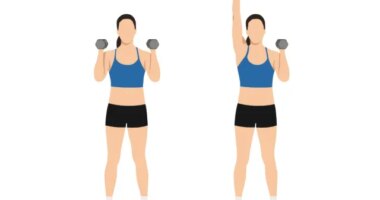
Diabetes can make it difficult for women to conceive. It is crucial to control and manage diabetes to protect your reproductive health.
According to a recent study published in The Lancet, India is home to 101 million individuals with diabetes, while 136 million people in the country are dealing with prediabetes. This means that approximately 11.4 per cent of the population in India is grappling with this metabolic disorder. Diabetes is a condition in which the body is unable to convert sugars and starches into energy due to insufficient insulin production by the pancreas. Consequently, these sugars remain in the bloodstream, leading to increased blood sugar levels. Diabetes can be broadly classified into type 1, type 2, and gestational diabetes. All these forms of diabetes can affect female fertility and subsequently impact pregnancy.
In this article, Dr Kshitiz Murdia, CEO & Co-founder, Indira IVF, explains the three types of diabetes, and how they impact female fertility and pregnancy.
Types of diabetes
In type 1 diabetes, the pancreas produces little to no insulin, hindering the body’s ability to use blood sugar for energy. Individuals with type 1 diabetes must regularly manage their condition by administering insulin injections.
Gestational diabetes is a form of diabetes that develops in pregnant women who did not have diabetes prior to pregnancy. It can usually be managed through a balanced diet and regular exercise. In some cases, insulin may be necessary. If gestational diabetes persists after childbirth, it is classified as type 2 diabetes.
Impact of type 1 diabetes on female fertility
Research has shown that women with type 1 diabetes experience distinct reproductive patterns compared to those without the condition. Type 1 diabetes can delay the onset of puberty (menarche) and lead to early natural menopause, reducing the woman’s reproductive window by 17 per cent. This is attributed to increased blood sugar levels, which accelerate ovarian aging. Additionally, compared to non-diabetic women, women with type 1 diabetes may experience delayed ovulation and irregular menstruation. Furthermore, type 1 diabetes can decrease the likelihood of natural conception and increase the risk of miscarriage and stillbirth.
READ RELATED: 7 Most Effective Strength Exercises To Prevent Belly Fat
Impact of type 2 diabetes on female fertility
Insulin resistance is a characteristic of type 2 diabetes, which means there is excess insulin in addition to elevated blood sugar levels. Insulin resistance has been linked to higher levels of male hormones (androgens such as testosterone) in women. Elevated testosterone levels in women disrupt the hormonal balance necessary for healthy reproductive function. Polycystic ovarian syndrome (PCOS), which affects 5-13 per cent of women of reproductive age, is associated with insulin resistance and higher-than-normal testosterone levels. PCOS leads to irregular ovulation, thereby reducing the chances of natural pregnancy.
Furthermore, both type 1 and type 2 diabetes are associated with irregular periods, infrequent menstruation (oligomenorrhea), and secondary amenorrhea, all of which can make it difficult for women to conceive. Diabetes can also contribute to obesity, further exacerbating the situation.
Diabetes affects various aspects of the reproductive system in both women and men, thereby reducing fertility. While lifestyle changes and medication can address some of these challenges, others may require the use of assisted reproductive technologies (ART) like in vitro fertilisation (IVF) to achieve pregnancy. It is crucial to control and manage diabetes not only for the overall health of vital organs but also for reproductive health. Couples planning to have a family should undergo proper diagnosis and treatment for any underlying conditions they may have. Ensuring the health of aspiring parents is essential to secure a healthy future for their children.
Total Wellness is now just a click away.
Follow us on
window.addEventListener(‘load’, (event) => {
$(‘#commentbtn’).on(“click”,function(){
(function(d, s, id) { var js, fjs = d.getElementsByTagName(s)[0]; if (d.getElementById(id)) return; js = d.createElement(s); js.id = id; js.src = “//connect.facebook.net/en_US/sdk.js#xfbml=1&version=v2.3”; fjs.parentNode.insertBefore(js, fjs);}(document, ‘script’, ‘facebook-jssdk’));
$(“.cmntbox”).toggle();
});
});









